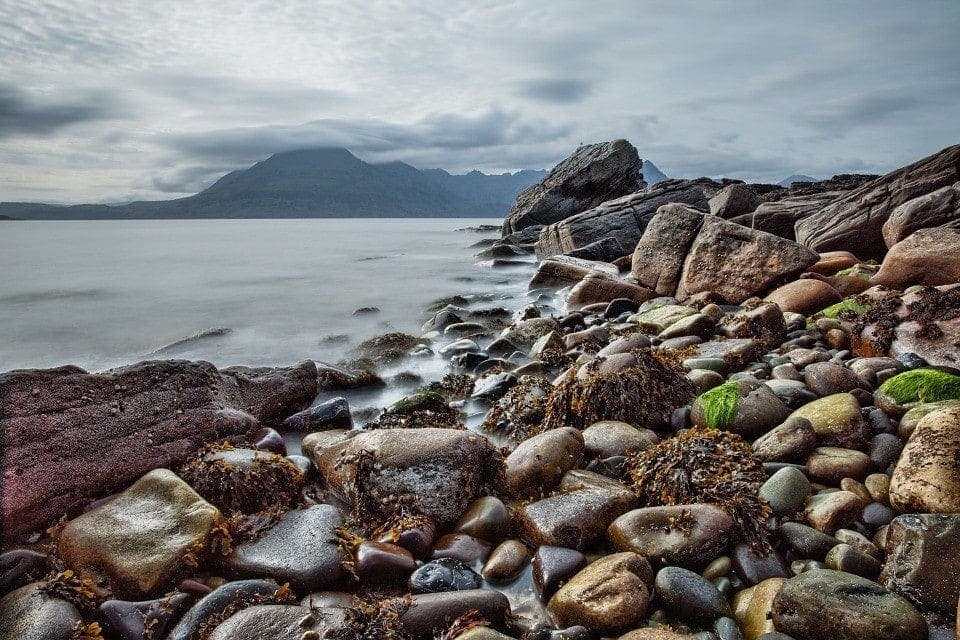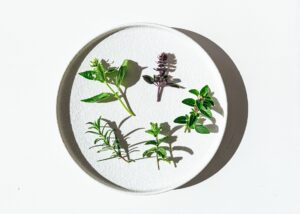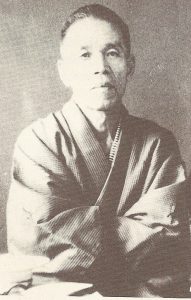Sea vegetables have been consumed as food in European coastal regions since ancient times. In Japanese cuisine, sea vegetables are just as popular as garden vegetables. Especially in this day and age, when we have many problems with degraded and denatured food, sea vegetables can close an ever-increasing gap in our diet and compensate for the ever-increasing lack of vital minerals. In general, sea vegetables have a refreshing and rejuvenating effect on the nervous system and are the best source of trace elements such as iodine and calcium.
Algae are naturally very rich in iodine. However, the iodine content of algae fluctuates greatly, from harvest to harvest or batch to batch up to 50%. An excessive intake of iodine can lead to disorders of the thyroid function. One should also be careful with problems with the thyroid gland. From experience, I recommend an average daily intake of no more than 0.2 mg iodine. In kitchen practice, this means approx. 1g = 1 algae or 1 tbsp algae per day.
Sea vegetables contain plenty of vitamin B 2 and two to three times as much calcium as milk. Due to the high content of enzymes and minerals, sea vegetables are the best means to compensate for the disadvantages of a diet with animal products and to cleanse the organism of corresponding residues. This also makes plant-based food more tolerable and enriched with minerals. And best of all: if properly prepared, they are very tasty.
Hijiki
Sea vegetables (hijikia fusiforme)
Hijiki is a black seaweed that thrives on rocky headlands and ledges on the Pacific coast. It grows at a depth of one to two meters because it needs a certain amount of sunlight. After growing for a year, Hijiki is harvested by hand in the spring, sorted clean, dried in the sun, steamed for several hours and then dried again in the sun. Hijiki contains 14 times as much calcium as cow’s milk, a lot of iodine, iron, vitamins A and B and protein.
Me-hijiki
Me-Hijiki are a specific shoot of the Hijiki plant and the meaning of the name is “short shoots”. The alga exists for about 7-8 years. The harvest takes place from March to the beginning of May. Due to their fine structure, they are softer than the grass itself and well suited for the preparation of delicate dishes and culinary specialties.
Arame
Sea vegetables (eisenia bicyclis)
Arame is similar to Hijiki, but has a milder taste and aroma and, like all sea vegetables, is high in iodine. Those who have never eaten sea vegetables should start with this variety. It is easy to prepare and looks delicious. Arame has a pleasant structure and a slightly sweet, delicate taste. Due to the relatively short cooking time of 20 minutes, arame is ideal as a side dish, for example sautéed with root vegetables (and tofu).
Wakame
Sea vegetables (undaria pinnatifida)
Wakame is a feather-like, long-growing type of seaweed that prefers cold currents. It is harvested in the coastal area and in the clean, clear water off Japan’s north island of Hokkaido and dried in the sun. Wakame is a very light sea vegetable that can also be eaten raw. To do this, however, it should be soaked for 10 to 15 minutes. It is particularly suitable as an ingredient in miso soups. It is very high in iodine, calcium and iron. Before using it, it should be washed under the tap to remove dust and then soaked for 3-5 minutes.
Kombu
Sea vegetables (laminaria sp.)
This type of algae is very popular in Japan and is often used in various dishes. Due to official instructions, Kombu may not be declared as a food in Germany but only as a bath additive. The reason is the relatively high iodine content. The algae grows in clean, clear deep sea water and develops into a thick plant up to ten meters long with large leaves. The further north it grows, the better its quality. Kombu from MUSO is harvested north of the Japanese island of Hokkaido. Winter lasts eight months here.
Kombu contains natural glutamate, which acts as a flavor enhancer and refines all dishes to which it is added. If it settles as a fine, white powder on the dried pieces, this is a special mark of quality and shows that this piece comes from the middle part of the plant.
Kombu is a versatile sea vegetable. It takes a longer cooking time and is particularly suitable for the preparation of beans, which makes it easier to digest thanks to its high mineral content.
In Japan, kombu is traditionally used as a base for soups by simply boiling it in water for 5-10 minutes. If only the water is used, it is particularly suitable for people who have not yet really made friends with sea vegetables. This way you can enjoy the qualities without eating the sea vegetables directly. It is also suitable as an addition to vegetables. Then it should be soaked for 3-5 minutes – prolonged soaking will make it slippery and slippery and difficult to cut. The cooking time is then approx. 30 to 60 minutes.
It can also be used to make sprinkle spices by roasting it in the oven until it becomes brittle and then grinding it into a fine powder in a mortar. It is also suitable as a substitute for salt and for seasoning cereals.
Kombu powder
Roasted dark, “Super Yang”
Traditionally made, it is roasted by hand over a charcoal flame. To make 10g of this kombu powder, about 40g grams of kombu are roasted for three to four hours. It needs to be mixed frequently during this process. In Japan, for example, it is used as follows: 1 pinch of kombu powder is dissolved in hot water and drunk 2 to 3 times a day.
Ne-kombu
Sea vegetables
Ne-Kombu is the lower part of the strand of the Kombu alga and therefore has a lot of strength and dynamic properties.
Tororo Kombu
Sea vegetables marinated in rice vinegar and dried
Ingredients: Kombu (laminaria sp.), Rice vinegar (before drying)
A particularly fine quality of this type of algae is used for this specialty, which is sun-dried and then soaked in mild Genmai-Su (spicy vinegar made from rice) for several days. Then the kombu is planed so that it looks like a fine carpet. Used as a side dish, to refine soups or to prepare spices, Tororo-Kombu brings a spicy and sour taste tickle to the meal.
Tororo kombu practically does not need to be cooked. It can be added to the soup at the end of the cooking time. Mixed with a little hot water and Shoyu, it tastes very good as an accompaniment to vegetables or grains.
Sea vegetables (porphyra
This special preparation of seaweed has become very popular worldwide thanks to the Japanese sushi bars. The dry leaves are the end product of a cultivation and processing process that can almost be called artistic. For cultivation on flat coasts with ebb and flow, the seed quality, the water temperature, the purity of the beach and sea, the right harvest time and the correct drying method are very important factors. This makes good quality nori quite expensive. The plants are grown on mink, pressed between mats after harvest and dried in the sun.
Good quality nori can be recognized by the relatively thick leaf with an iridescent purple-blackish color. There is something radiant about it.
When lightly roasted, it has a delicate, spicy taste and tastes good even to skeptics. Of all the sea vegetables, it has the highest protein content and is really nutritious.
Nori is a sea vegetable specially pressed into leaves that hardly needs any further preparation and is therefore immediately available for consumption. It is neither washed nor boiled, just roasted briefly over a flame until it turns slightly green. It can either be eaten as it is or – cut into small strips – to garnish soups, salads, pasta dishes or as “packaging” for rice rolls and rice balls. Nori is very rich in vitamins, especially A and B 12, iodine, iron and calcium
Ao nori
Ingredients: nori flakes
To be used as a sprinkle on cereals, vegetables, sushi and other dishes.
Spiced Nori (mini sheets)
Ingredients: Nori, herbal mixture (potato syrup (potato, barley malt), shoyu, mirin, sea salt, kombu, red pepper, shiitake mushroom).
Sushi nori no longer need to be processed, because they are already very evenly and gently pre-roasted. These can be nibbled straight from the pack. In Japan they are especially used for filled rice rolls, which are already a complete meal. They are also becoming increasingly popular as a snack in Europe and the USA
Sea vegetables (undaria pinnatifida)
The syllable “Me” means drive, the syllable “kabu” means tree stump. Mekabu is a specific part of the strand of the wakame alga, namely the section between the root and the upper area. They are particularly rich in minerals. The best quality is hand-picked by women diving. Mekabu has a very high nutritional value. It is a sea vegetable with a very intense taste that takes a very long time to cook. It is particularly suitable as an ingredient in hearty soups or stews. It should be soaked for 20 minutes, during which time it will be quite slippery. Then Mekabu is boiled for about 30-60 minutes or prepared in a pressure pot for 20-30 minutes
Agar Agar
Gelling agent
E 406, for food
Agar-agar is a traditional, highly nutritious gelling agent made from 8 different types of red algae. It can be used in many ways to thicken and solidify.
Agar-agar is used to make aspic and as a thickener for desserts. It’s a healthy alternative to conventional gelatin, which is made from animal products. It is rich in calcium, digestive and detoxifying. Agar-agar is dissolved in hot water, poured over cooked ingredients or added during boiling and gets its solid substance after cooling. The traditional name for jellies with agar-agar is “edges”. Agar-agar can also be used to make jams and fruit spreads for thickening.







